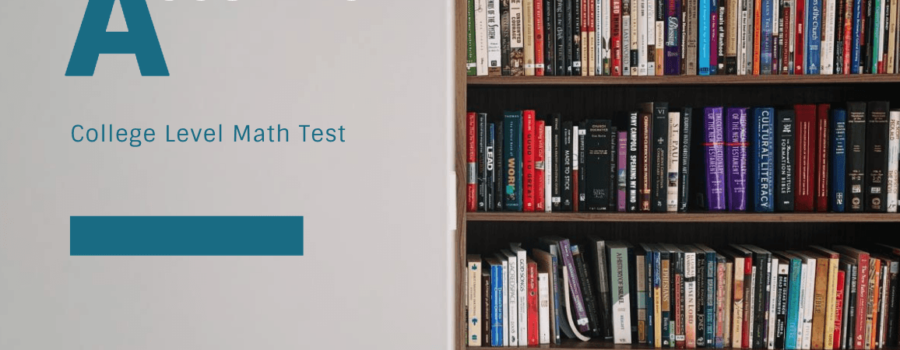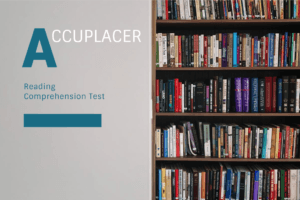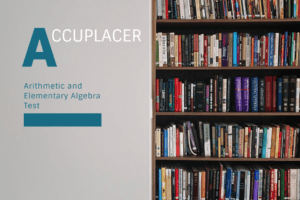The next and final phase of ACCUPLACER’s math exam comprises the college-level test. The purpose of the test is to measure your capacity to solve college-level mathematical problems. There’s no shortcut to it.
As long as your basics arithmetic concepts are clear, you will be able to solve the most complex problems without any trouble. In fact, students are known to find several topics quite interesting.
Although the college level math test is divided into five segments, students are free to prepare for the topics on their own terms. The goal of this article is to simplify and help you understand how to pass the core concepts of this college-level math test.
The test starts with linear equations, solving systems of equations, and that includes simplification. After that, you can expect to see problems about linear applications with graphs, analytical interpretation of descriptive statistics, and finally a sub-section on geometry.
Students who are just getting started in pre-algebra would have to understand the calculation of area, circumference, and perimeter. The major topics for algebra include in-depth calculation of Pythagorean Theorem. And apart from solving the theorem, you will be asked how it relates to a given perimeter, volume, or area.
Linear Applications and Graphing
After solving systems of equations, students will be required to solve linear equations with graphs. And that means solving equations contextually on a graph paper as well.
To master the workability of this sub-section, make sure you understand how each component of the graph functions. Also, equations can be written in various forms. Thus, it’s best that you grasp the concepts with an analytical mindset.
From there on out, students are required to calculate points, such as finding the midpoint of two points and distance between two points. Similarly, you can use the Pythagorean Theorem to solve these points on the coordinate plane.
Interpretation of Functions
Students can’t outright expect to identify or classify the various functions. It may sound rudimentary, but it’s vital to understand how dependent and independent variables work, or how the argument is substituted, and what a domain means and involves.
Furthermore, functions can also be manipulated via horizontal and vertical shift. The trick is to know exactly when to stretch or compress the paradigm shift.
Types of Functions
Students often have a hard time dealing with the structure and behavior of the functions. And they are classified into constant, identity, linear, and polynomial functions. However, quadratic is the most widely used function. Others may include rational, absolute value, square root, and exponential functions.
Moreover, you will be asked to solve logarithmic functions, which are equations with a varying format. Logarithmic encompasses monotone, even, one–to–one, odd, algebraic, and transcendental functions.
Solving Logarithmic Concepts
To apply the operations of functions, first, you must know how to find the difference, product, sum, or quotient of two functions.
And logarithmic topics range from the remainder, factor, and rational root theorem. That said, the variables attached to each concept could have a direct or inverse functional rate.
Understanding Trigonometry
The three major functions of trigonometry comprise sine, cosine, and tangent. Additionally, you might also be asked to solve reciprocal functions, such as cosecant, secant, and cotangent, which are not as broadly used as the prime functions.
Also, be prepared to solve trigonometric identities that involve sum and difference, half–angle formulas, double angle formulas, and complementary angles. Besides, don’t forget that the Pythagorean Theorem can also be applied to trigonometry concepts.
Practice as much as you can on the table used for encounter angles. Subsequently, it will help you navigate between the unit circle, standard position, and rectangular coordinates.
Series and Sequences
You will be required to solve divergent and convergent sequences. The underlying function of two sequences has the same limitations as before. In the same manner, students can expect to get monotonic and arithmetic sequences.
And many students later find that they already knew recursive sequence as it is also called the Fibonacci Sequence.
The geometric and infinite series should also be one of your top priorities as both are frequently tested in the college-level math test.
UGO Prep is here to Help you
We understand the climactic response most students are used to when it comes to the ACCUPLACER math test. We’re here to guide you through all the complexities of the college-level math exam. Our goal has always been to provide more than just a go-to guide for students. And UGO is experienced enough to help you focus on the ACCUPLACER topics that matter the most.






